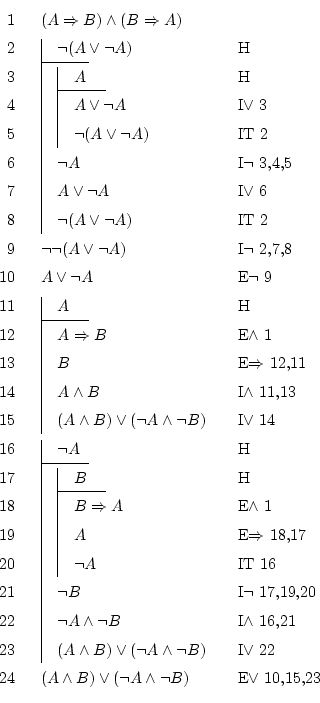Next: 6 Wrong things Up: 5 Explained exercises Previous: 5.13 I had this Contents
Seems easy: if two expressions are equivalent, it's because they are
both true, or both false. I could prove the validity of
![]() this way:
this way:

Firstly: we can't write
![]() since we don't have
rules for
since we don't have
rules for
![]() . Since it is seldom used, when a
. Since it is seldom used, when a
![]() appears we are allowed to change it to
appears we are allowed to change it to
![]() ,
which is the same.
,
which is the same.
Well, this is the only idea I had... I leave as an exercise to find
a shorter way to do it (if it does exist). What I did here was to
write down that ![]() is true (we already did this exercise,
and here I just copied the same steps). Once I know that
is true (we already did this exercise,
and here I just copied the same steps). Once I know that ![]() holds, I see that both the case
holds, I see that both the case ![]() and the case
and the case ![]() lead to
the same formula, which is the solution.
lead to
the same formula, which is the solution.